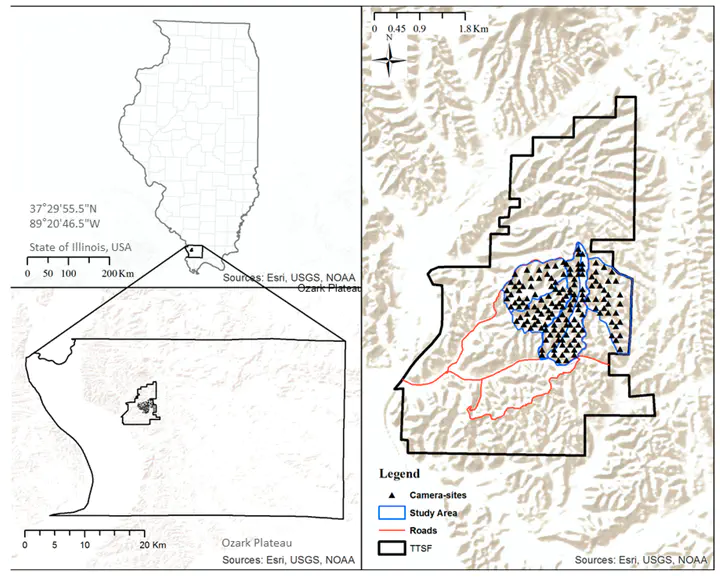Influence of Forest Structure and Composition on Summer Habitat Use of Wildlife in an Upland Hardwood Forest
 Image credit: JWM
Image credit: JWMAbstract
Oak-hickory (Quercus-Carya spp.) forest types are widespread across the midwestern United States, but changes in forest disturbance regimes are resulting in little to no oak recruitment and a compositional shift to shade-tolerant, mesophytic species, such as American beech (Fagus grandifolia) and sugar maple (Acer saccharum). We conducted camera trap surveys in a mature upland hardwood forest of southern Illinois, USA during May to August 2015–2016 to document mammal summer habitat use in relation to forest structure and composition to further understand how regional shifts in forests may affect mammal communities. With nearly 4000 camera days of effort, we modeled occupancy patterns for white-tailed deer (Odocoileus virginianus), raccoon (Procyon lotor), and eastern gray squirrel (Sciurus canadensis). Forest composition models outcompeted forest structure models for white-tailed deer, where we observed a statistically significant negative relationship between white-tailed deer habitat use and beech dominance. Further, we found a strong, positive association between deer and oak dominance. Model selection indicated little support for within-stand forest structure or composition characteristics influencing habitat use for raccoons. Eastern gray squirrel occurrence was best described by forest composition, revealing a positive relationship with beech–maple importance values. Our predictive models indicated that the impact of forest changes underway will have varying impacts on wildlife species. We can expect changes in habitat use patterns to be more pronounced with time barring revised forest management practices, and these changes are likely to be most influential at the landscape-scale. We conclude that a patchwork mosaic of forest conditions will likely best support a diverse and abundant mammal community across the region.